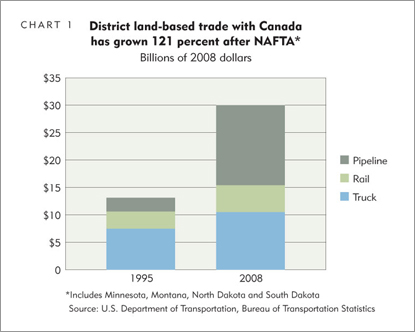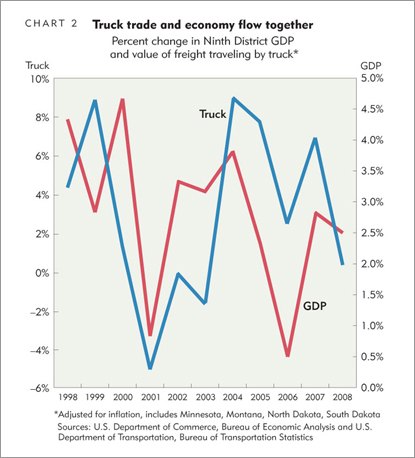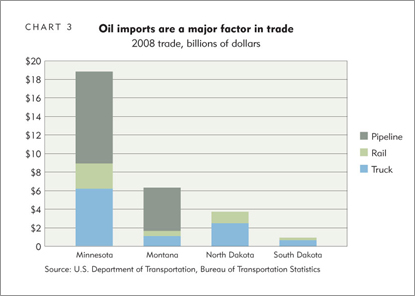The North American Free Trade Agreement removed barriers to trade between the United States, Canada and Mexico, opening the doors for huge freight flows among the three countries. The four full states of the Ninth District experienced over $30 billion of land-based trade (primarily through pipelines, truck and rail) with Canada in 2008, a real increase of 121 percent from the start of NAFTA in 1995 (see Chart 1).
The value of freight traveling between the Ninth District and Canada has not always grown steadily over the years, mostly because trade generally follows national growth and recession trends. Trucking, for example, has been affected by the current and past recessions (see Chart 2). The value of truck freight was essentially unchanged in real terms in December 2008 compared with December 2007. Meanwhile, from 2000 to 2001 (the last recession), the value of truck freight saw a real decline of 5 percent.
Within the Ninth District, there are differences among states in mode of transportation to and from Canada (see Chart 3). Minnesota and Montana have several refineries that process Canadian oil, which is why pipelines make up about half and three-quarters of the value of trade in those two states, respectively. North Dakota transports about a third of its trade via train (mostly agricultural and energy related); it is also the state where the agriculture sector comprises 6 percent of GDP, the highest proportion of any of the district states.









